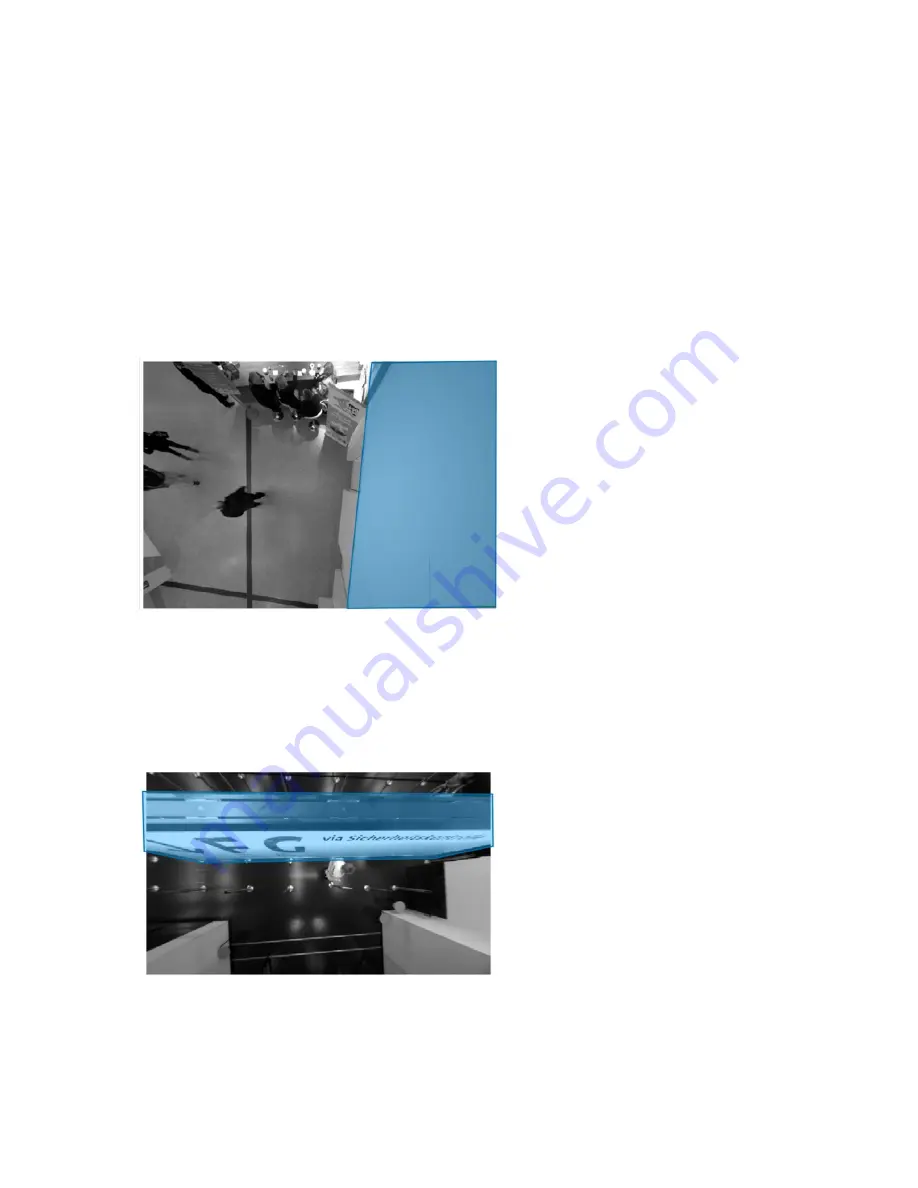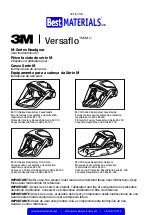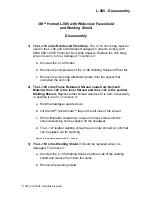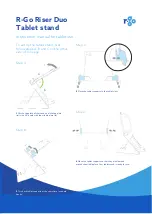
91 / 99
www.xovis.com
For better identifying objects influencing the internal processing, it is best to switch the
sensor to head coordinates. Refer to chapters 3.2.7.9.1 and 3.2.10.4 to learn how to change
the coordinate mode. Now, with coordinate mo
de set to “head”, false detections are shown
where they really appear.
Figure 55 shows a situation combining two reasons for using taboo masks in the same
scene: First, a significant part of the scene is covered by the wall which reaches towards the
sensor. This can cause disturbing artefacts which can influence the sensors vision
algorithms. Second, the situation shows two doors in the inner area of the scene, i.e. not at
the scene border, same as already in Figure 54. Telling the sensor about this artificial scene
boundary helps for proper person deletion when leaving through the doors. Masking out the
area appropriate eliminates such possible misbehavior:
Figure 55: Taboo mask on unstructured white wall and marking the scene boundary over two doors
Figure 56 shows a situation with a big sign located within the sensors view. As this sign is
very close to the sensor, the stereo vision processing could be disturbed. And, again as with
the situations in Figure 54 and Figure 55, it is important to tell the sensor about this scene
boundary. Otherwise person bubbles could stick at the sign when the person walks
underneath it. Masking out the sign appropriate eliminates such possible misbehavior.
Figure 56: Taboo mask on a sign within the sensor view
Note that, other than with floor masks, taboo masks usually cover slightly more than
necessary. This is important due to the fact, that disturbing artefacts which are masked out
by taboo masks show inexact dimensions and can slightly slop over their actual region.
Summary of Contents for PC Series
Page 1: ...PC Series User manual...









































